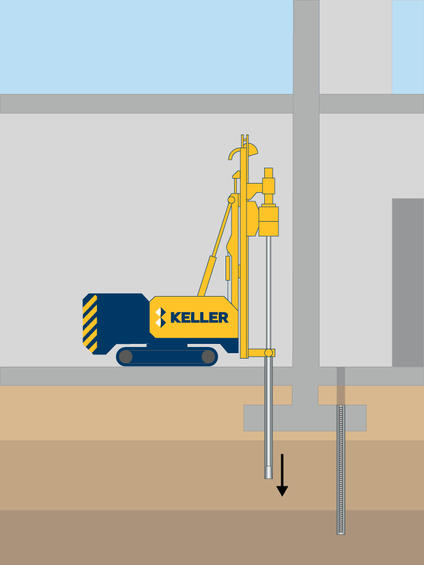Micropiles, also known as minipiles, pin piles, needle piles, and root piles, are a deep foundation element constructed using high-strength, small-diameter steel casing and/or threaded bars.

Common uses
Process
The casing, with a diameter generally in the range of 150mm to 300mm is advanced to the design depth using a drilling technique.
Reinforcing steel, typically an all-thread bar, is inserted into the micropile casing and high-strength cement grout pumped in. The casing may extend to the full depth or end above the bond zone with the reinforcing bar extending to the full depth.
Capacities vary depending on the micropile size and subsurface profile but compressive capacities of more than 500 tons have been achieved.
Advantages
Quality assurance
Keller has vast load test experience in various rock formations and the ability to design in-house based on various subsurface conditions.